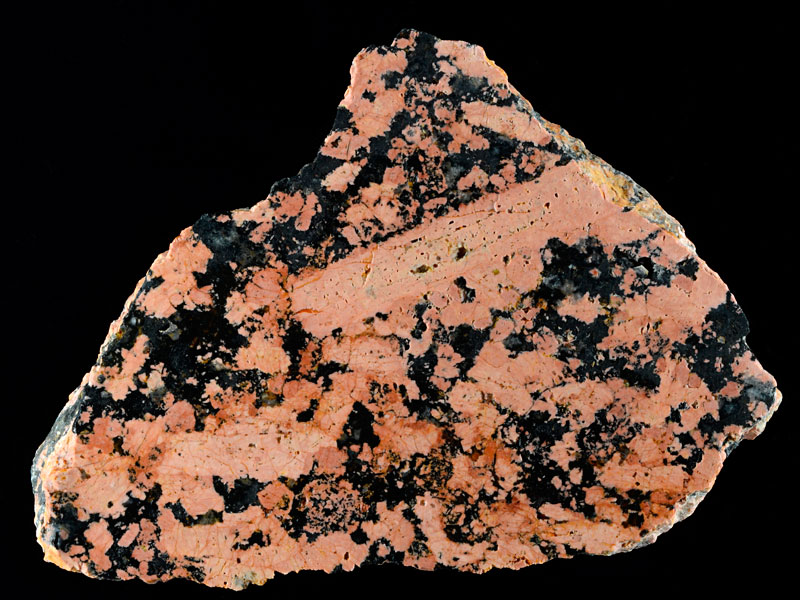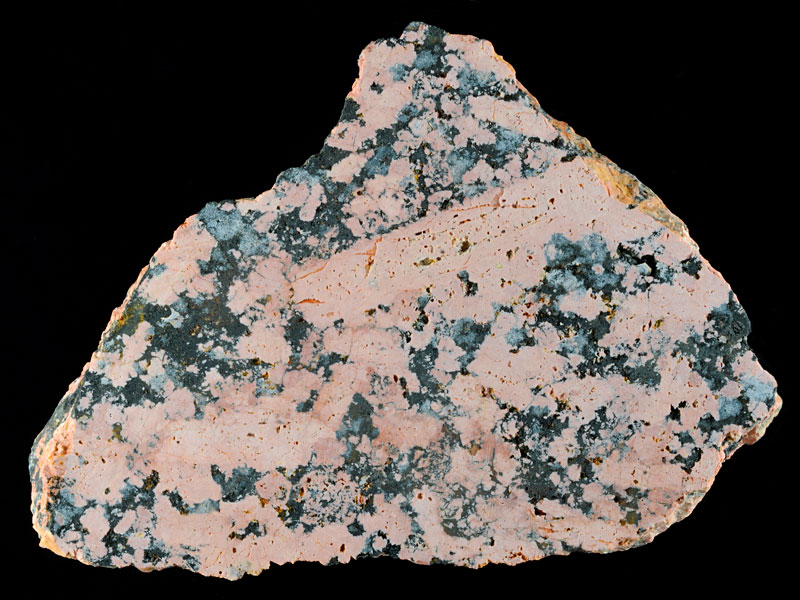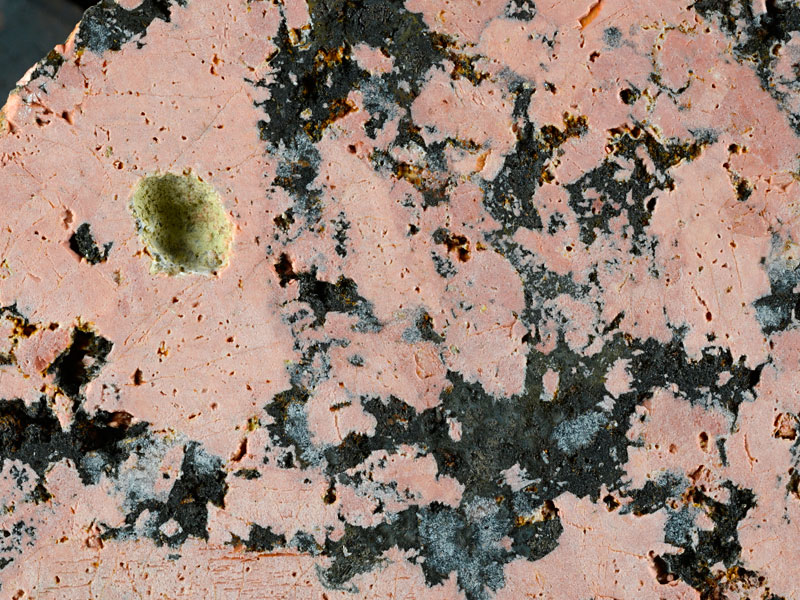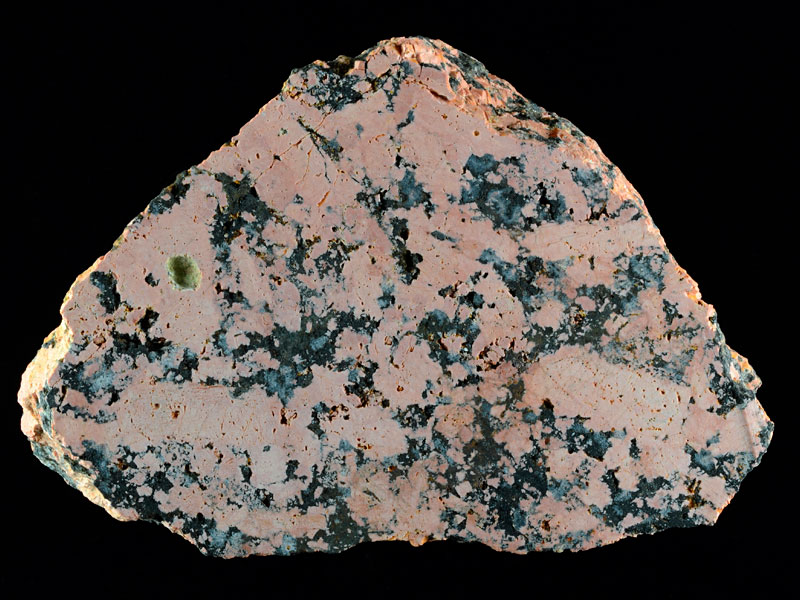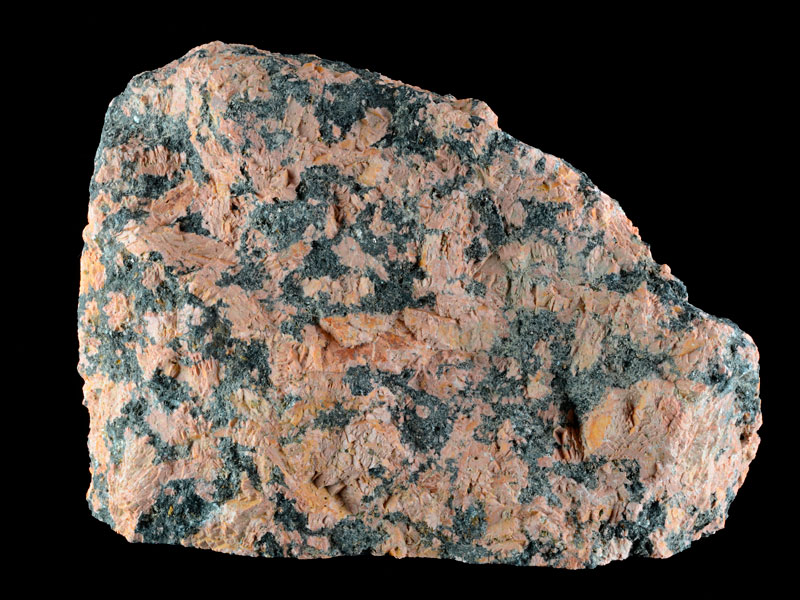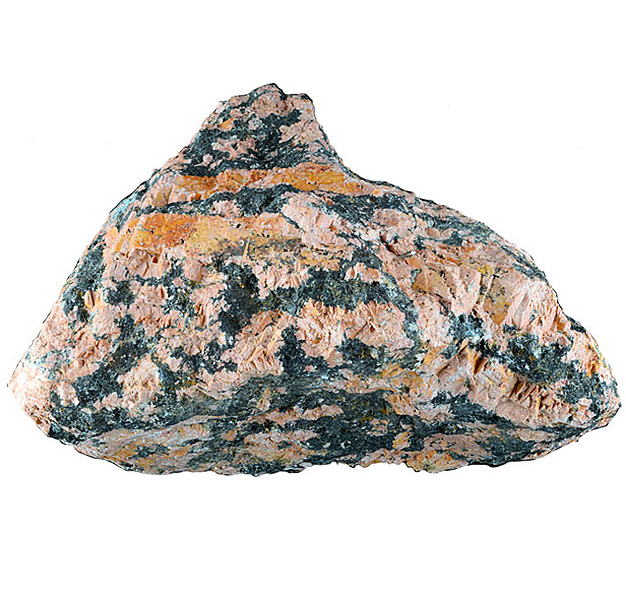
Fact sheet
Luxullianite is a rare type of tourmaline-rich granite named after the village of Luxulyan in Cornwall. Luxullianite is formed from boron-rich pegmatitic fluids caused by fractional crystallisation of the biotite-rich St Austell granite complex, which formed around 280 million years ago by partial melting of the lower continental crust during the Variscan orogeny.
In hand specimen the rock appears to consist of two main parts – striking salmon pink tabular feldspar shapes, and black tourmaline that appears to be infilling. Luxulyan quarry is a large (now water-filled) hole on the outskirts of the village. The quarry has been designated an SSSI (site of special scientific interest), and access and collecting is not normally possible.
In thin section the large feldspar shapes that appear pink in hand specimen are only partly transparent and appear dark. The feldspar grains exhibit some features characteristic of feldspar, and their partial alteration to kaolinite and sericite is part of a sequence from pure granite to clays in our collection of SW England granites. The other minerals present are tourmaline, white mica and quartz. Radial tourmaline crystals growing into cavities are visible in this thin section but are much better developed in other Luxullianite samples in the collection.
The United Kingdom Virtual Microscope (UKVM) collection consists of igneous, sedimentary and metamorphic rocks from around the UK.
It is intended as a teaching resource, helping to tell the story of the common rock types and how they form, and reflecting the history of the UK at the margins of the continent of Europe. The collection is a series of teaching sets, for example igneous rocks from the North Atlantic Igneous Province and SW England; high-temperature metamorphic rocks from Scotland and low-temperature metamorphic rocks from Wales; and sedimentary rocks, including English limestones and sandstones.
